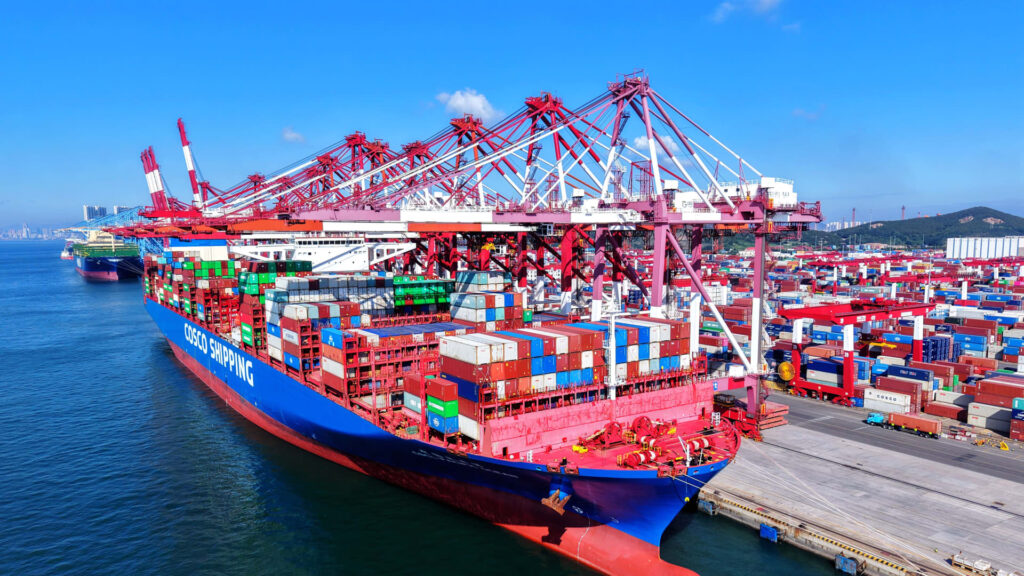A cargo ship loads and unloads foreign trade containers at Qingdao Port in Qingdao City, Shandong Province, China, July 28, 2025.
Photo | Future Publishing | Getty Images
Despite the disruption, pressure and shock from trade tariffs introduced by the United States this year, global trade is not in ruins, the World Trade Organization (WTO) chief told CNBC on Tuesday.
“Many people have the impression that global trade is collapsing because of unilateral actions by the United States. Yes, there has been a major disruption to global trade, the largest disruption to global trade in 80 years. But we are pleased to confirm the resilience of this system,” said WTO Director-General Ngozi Okonjo-Iweala.
“The system is battered and scarred, but it’s still alive,” she told CNBC’s Dan Murphy on the sidelines of the Saudi Future Investment Initiative.
Okonjo-Iweala’s comments come as US President Donald Trump, the architect of several tariffs on foreign imports into the US, continues his tour of Asia, where he has so far signed trade deals and a truce.
But the biggest challenge for Trump will be whether he can reach an agreement with Chinese President Xi Jinping, whom he is scheduled to meet on Thursday, to reduce tariffs and counter-tariffs on a wide range of products. President Trump boosted market expectations on Monday by saying the U.S. and China were ready to “make a deal” happen.

“I hope the talks go well,” Okonjo-Iweala said, adding that any easing of trade tensions was welcome.
“The threat of a rift or conflict between China and the United States in the trade field is bad for neither country nor the world. The threat of a schism or division between the two countries, splitting the world into two trade camps, will lead to losses in global welfare, and poorer countries will be hit harder,” he said.
WTO predictions
In early October, the WTO raised its forecast for global trade growth in 2025, but warned that the outlook for 2026 would worsen.
Despite the trade body’s August report predicting trade volume growth of 2.4% this year, a significant increase from the previous forecast of 0.9%, the WTO revised down its previous forecast for trade volume growth of 1.8% next year to a lackluster 0.5%.
He cited the effects of the cooling global economy and increased tariffs as reasons for the revision.
Trade tariffs have been a dominant feature and headwind for global commerce since US President Donald Trump shocked friends and foes alike with a massive tariff regime in April.
Countries are scrambling to strike trade deals with the White House, but even allies such as the United Kingdom see basic 10% tariffs remaining on exports to the United States.
Global trade volumes increased significantly in the first half of 2025, increasing by 4.9% year-on-year. Several factors contributed to this strong expansion.
The WTO said this includes bringing forward imports to the United States in anticipation of higher trade tariffs, and favorable macroeconomic conditions such as disinflation, supportive fiscal policies and tight labor markets that boost real incomes and spending in major countries.
Strong growth in emerging markets and increased demand for artificial intelligence-related goods such as semiconductors, servers and communications equipment are also driving global trade growth, it said, adding that AI-related spending drove nearly half of the overall trade expansion in the first half of this year, increasing by 20% year-on-year in value terms.
Global competition in the development of AI-related products is intensifying.
The WTO pointed out that the United States accounted for about one-fifth of the growth in global AI-related trade in the first half of 2025. However, much of the expansion came from Asia, which accounted for nearly two-thirds of global AI-related trade growth over the same period.

